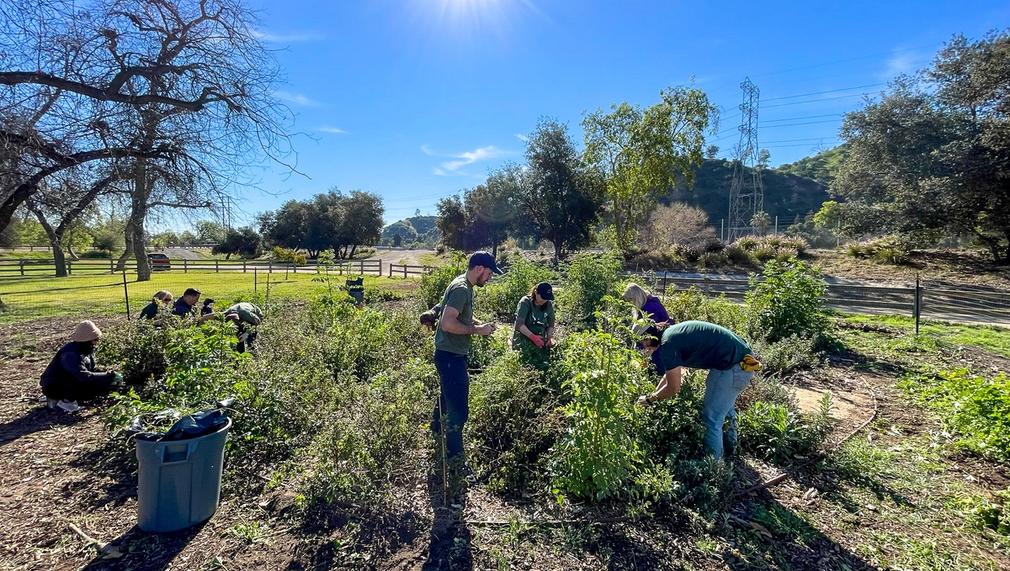Native Species for the Parks of the Future
Los Angeles has more park acreage than any other city in the US, but our parks are threatened by climate change and ongoing drought conditions. The Los Angeles Parks Foundation will use an LA2050 grant to expand its Native Species Nursery, located in Griffith Park, to supply diverse, resilient native plant species for free to parks across the city for free. The project will also provide education to city park staff and the community at large to care for these plants and support the installation of a model Miyawaki Forest.

What is the primary issue area that your application will impact?
Green Space, Park Access, and Trees
In which areas of Los Angeles will you be directly working?
City of Los Angeles
In what stage of innovation is this project, program, or initiative?
Expand existing project, program, or initiative
What is your understanding of the issue that you are seeking to address?
Delphire brings the electric utilities a novel solution for their wildfire problem. Our technology uses visual edge AI monitoring below the tree canopy along their transmission lines’ right of way to catches fires early, during their incipient phase, to prevent the most damage possible. We cover a critical need area where infrared satellite-based detection will be ineffective due to several factors. We expect to reduce the damage on up to 30 fires a year and prevent 5 entirely when deployed over 20,000 pole miles (1 unit/2 transmission towers) at a cost of $250M. The anticipated yearly benefits are: (1) lives saved, (2) $1.5B from reduced direct damages and firefighting costs, (3) $205M in reduced environmental damage from prevented GHG emissions, equivalent to 1 million metric tons CO2 annually.
Describe the project, program, or initiative this grant will support to address the issue.
The Los Angeles Parks Foundation (LAPF) will work with the Department of Recreation and Parks (RAP) to supply native plants for installation in city parks to reduce water usage, foster LA’s biodiversity, and create resilient landscapes. Funding will build the capacity of our native plant nursery operation located in the historic Commonwealth Nursery in Griffith Park by adding a full-time nursery manager. Our nursery manager will collect and propagate hyper-local seeds, use water-saving techniques, and work with RAP to install native plants in city parks where they will reduce maintenance costs and have higher survivability rates. All plant material and labor is provided to RAP for FREE. There are currently 57 native plant species grown in the nursery. Nursery staff will educate RAP staff and the community about native plant care, building city infrastructure for vertical integration of resilient park design, practice and supply. Funding will also support the installation of our second Miyawaki Forest. The Miyawaki method uses dense, multi-layered, intensely diverse plantings that grow 10x faster than traditional forests. These micro-forests become fully established in just three years. Our pilot forest in Griffith Park is a 1,000 sq. ft. circle composed of 145+ native species and serves as a replicable model for habitat restoration efforts. This installation is part of LAPF’s Park Forest Initiative, which includes 20 fully funded Park Forests across Los Angeles.
Describe how Los Angeles County will be different if your work is successful.
LAPF’s project will ensure that there is capacity in native plant supplies, expertise, and installation so that we can continue to replicate and scale sustainable park installations across the city. The nursery operation and Park Forests Initiative can also serve as a teaching ground for park administrators and staff throughout Los Angeles County. The nursery will ensure a steady supply of native plant material for city parks. Native plant installations in city parks make for a healthy, biodiverse and drought tolerant Los Angeles. A fully operational nursery will allow for expansion of the Miyawaki forest installations across the city and contribute native plants to our Park Forest Program. If our project is funded, by 2050 Los Angeles will: -lead the US in the use of native plant species in public parks -rectify historic park, tree and shade inequity -save millions of gallons of water - mitigate heat and air pollution -celebrate beautiful, diverse native flora and fauna
What evidence do you have that this project, program, or initiative is or will be successful, and how will you define and measure success?
The nursery manager will collect data on all native plant species and cataloging measurements, water usage and plant variety in the nursery and at project sites. We will also actively engage the community, encouraging social media reports of birds, insects and wildlife. Our most pressing measurement is water savings. Everything that we plant, including our nursery and Park Forests are deep hand-watered, maximizing hydration while conserving water. We foresee that the drought and climate change will continue to necessitate plant selection and care. The nursery manager will be responsible for tracking, identifying and tailoring plant species to each city park to ensure that they thrive in the specific microclimate. This will also create a living database for LAPF and RAP to use for native plant selection in city parks. We are exploring ways to measure carbon capture, air quality, heat measurement and water savings, though true impact may take a few more years of scale to measure.
Approximately how many people will be impacted by this project, program, or initiative?
Direct Impact: 4,000,000
Indirect Impact: 14,000,000